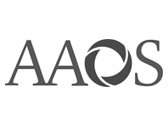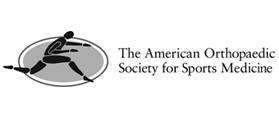SLAP Repair and Bicep Tenodesis
What is a SLAP Repair?
A SLAP repair is an arthroscopic shoulder procedure to treat a specific type of injury to the labrum called a SLAP tear.
Shoulder Anatomy
Your shoulder joint is a ball and socket joint made up of the upper arm bone, the shoulder blade, and the collarbone. The head of the upper arm bone fits into the socket of the shoulder joint known as the glenoid cavity. The outer edge of the glenoid is surrounded by a strong fibrous tissue called the labrum.
What is a SLAP Tear?
A superior labrum anterior and posterior tear or SLAP tear is an injury to the labrum. This injury may also involve the biceps tendon, which is attached to the top part of the labrum. The injury occurs from repeated use of the shoulder while throwing or a fall onto the shoulder.
What are the Indications for a SLAP repair?
A SLAP repair is indicated to treat the torn labrum of the shoulder socket when conservative treatment measures such as NSAIDs (non-steroidal anti-inflammatory medications) and physical therapy do not relieve the symptoms of a SLAP tear.
How is a SLAP Repair performed?
A SLAP repair is a minimally invasive surgery that uses an arthroscope, a tube with a light and camera on the end that projects images onto a monitor for your surgeon to view inside your joint. The type of SLAP repair depends on the type of tear involved and will be determined once your surgeon views the joint. The procedure is performed under general anesthesia and a nerve block.
- Your surgeon first makes small incisions to insert the arthroscope and thin surgical instruments into the shoulder joint.
- Your surgeon will then identify the type of SLAP tear and remove the damaged tissue of the labrum.
- A small hole is then drilled into the bone of the shoulder socket close to the labral tear.
- Your surgeon will place an anchor into the drilled hole with a strong suture.
- Additional anchors can be placed as required for securing the torn labrum to the bone of the shoulder socket.
- Finally, the torn labrum is tied to the bone with the sutures.
What are the Steps Recommended for Postoperative Care following SLAP Repair?
After the procedure, your arm will be placed in a sling for the first 3 weeks to immobilize the shoulder joint and you will be advised to restrict active motion of your shoulder for about 6 weeks. You will be instructed to take your pain medications and apply ice packs to control swelling and pain. The plaster strips over the wounds should be kept dry until the wounds heal. Through physical therapy, you can slowly regain motion and strengthen the shoulder. You can resume sports activities after consulting with your physical therapist and surgeon. You should avoid driving for a few weeks after the surgery.
What are the Advantages of SLAP Repair?
A SLAP repair involves the reattaching of the labrum to its normal anatomical position; thereby, restoring the anatomy of the shoulder. The procedure also allows the normal functioning of the previously damaged labrum and biceps attachment.
What are the Associated Risks and Complications of SLAP Repair?
As with any surgical procedure, SLAP repair may involve certain potential risks and complications including:
- Infection
- Excessive bleeding
- Blood clots
- Shoulder stiffness
- Injury to nerves or blood vessels
Proximal Biceps Tenodesis
What is Proximal Biceps Tenodesis?
Proximal biceps tenodesis is the surgical reattachment of a torn proximal biceps tendon, which connects the upper part of your biceps muscle to the shoulder.
What causes a Proximal Biceps Tendon Tear?
- Causes for a proximal biceps tendon tear include:
- Falling on an outstretched arm
- Lifting very heavy objects
- Excessive use of the shoulder during sports and overhead activities
The risk factors for developing a proximal biceps tendon tear include:
- Aging
- Smoking
- Use of certain medications
Symptoms of a Proximal Biceps Tendon Tear
You may experience one or more of the following symptoms:
- Sudden, sharp shoulder or upper arm pain
- Snapping sound or pop in the shoulder or upper arm region
- Tenderness at the shoulder
- Biceps muscle cramping
- The weakness with shoulder and elbow movements
- Difficulty rotating the forearm
Diagnosis of a Proximal Biceps Tendon Tear
Your doctor will look for specific signs such as the ‘Popeye Muscle’ sign where the biceps muscle bunches up near the elbow which implies a complete rupture of the proximal tendon. With partial ruptures, you feel pain while bending the arm. To confirm the diagnosis, your doctor may order an MRI or CT scan.
Why is Proximal Biceps Tenodesis Necessary?
Non-surgical treatment includes medication, resting or avoiding activities that aggravate your symptoms, application of cold packs or physical therapy. Proximal biceps tenodesis is recommended by your doctor if you:
- Do not respond to nonsurgical treatment methods
- Have other structures injured within the shoulder
- Are an active individual who requires restoration of muscle strength
How do you prepare for Proximal Biceps Tenodesis?
You must avoid medications such as painkillers a few days before the surgery and will have to avoid eating or drinking for a couple of hours before surgery. Your doctor will give you specific instructions on how to prepare for the procedure.
How is Proximal Biceps Tenodesis Performed?
The surgery may be performed by arthroscopy (keyhole surgery) or open surgery if proximal bicep tenodesis is part of a larger surgery. Proximal bicep tenodesis may involve the following steps:
- You are given general anesthesia.
- A tiny incision is made by your surgeon.
- An arthroscope, which is a thin tube-like instrument with a camera, is inserted through the incision to visualize the joint.
- Your surgeon views the inside of the shoulder joint and the bicep tendon tear on a monitor and performs the necessary surgical repair.
- The injured tendon is detached from the shoulder joint (It may already be detached in the case of a complete tear).
- The frayed end of the long head of the bicep is clipped off.
- An anchoring device is used to reattach the tendon to the bone.
- The incision is closed, and a surgical dressing is placed.
Risks associated with Proximal Biceps Tenodesis
Proximal biceps tenodesis is a very safe procedure; however, there may be certain risks which include, but are not limited to, bleeding, infection, delayed healing, or failure to heal.
Recovery after Proximal Biceps Tenodesis
After the procedure, you may be given pain medicine for a few days to keep you comfortable and your shoulder will be supported by a sling for about a month. Physical therapy may be recommended after a week or two to maximize the range of motion and shoulder strength.







